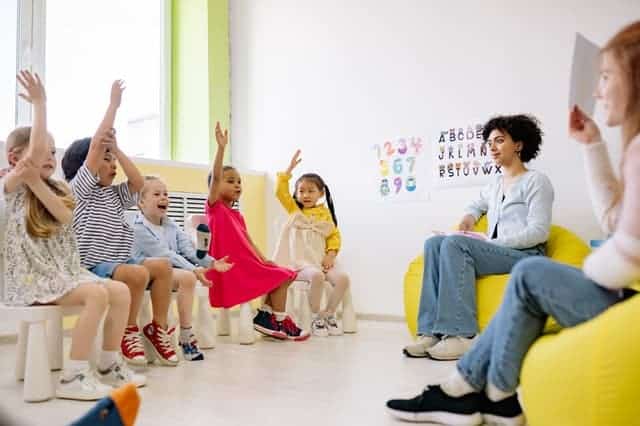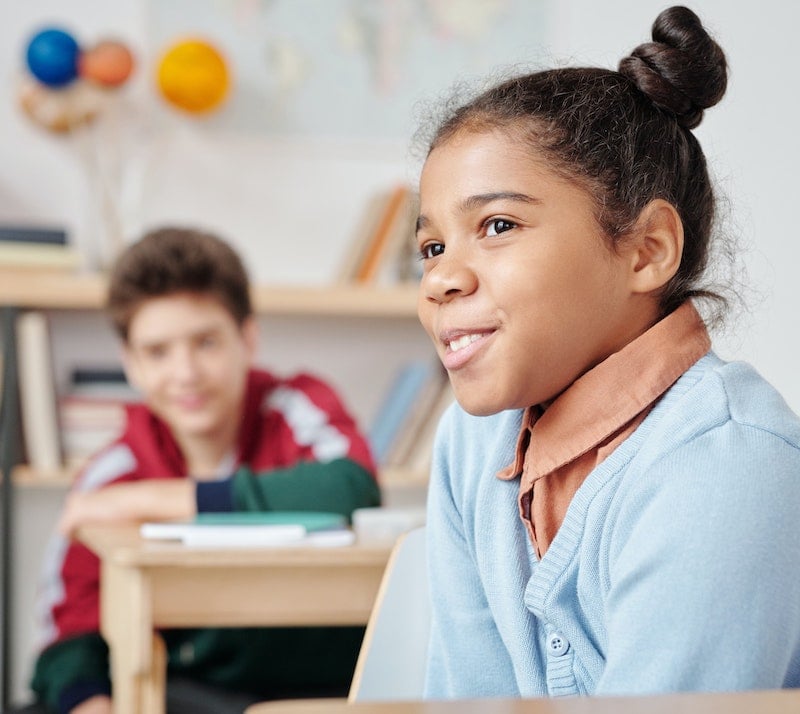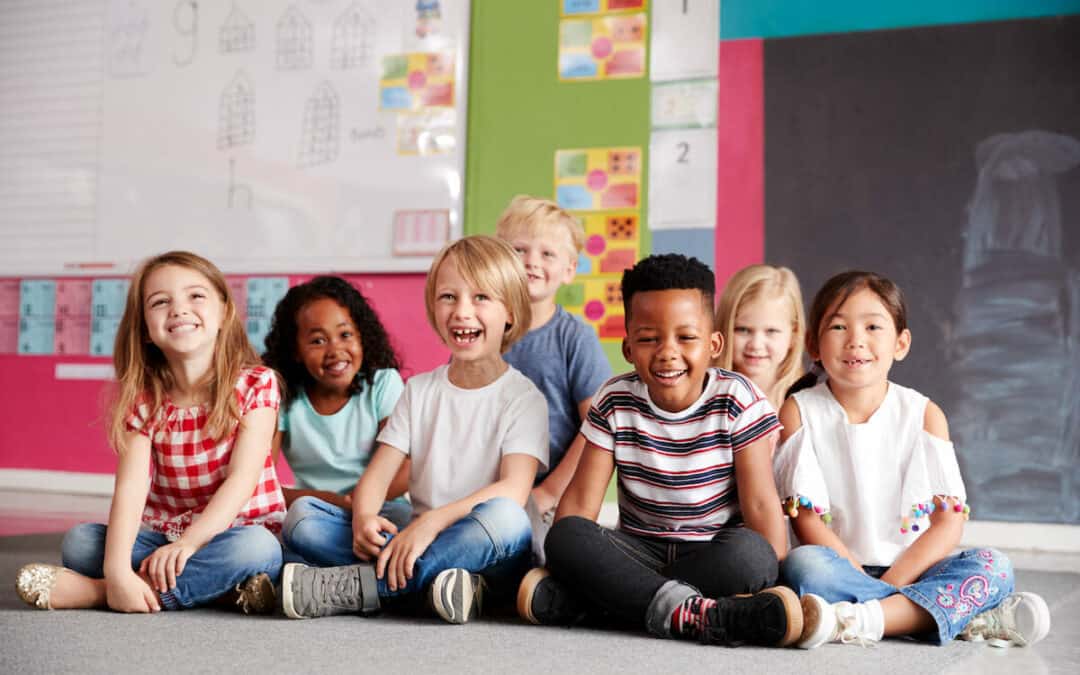Young children tend to have psychological elasticity, and they can handle a lot. Believe it or not, childhood is the ideal time for kids to learn as many positive thinking exercises and coping mechanisms as possible.
With a foundation in positive thinking techniques, children will have a better chance of living more fulfilling and successful lives. Positive thinking is connected with lower rates of depression, longer life spans, less distress, and psychological and physical well-being. (Mayo Clinic) As a result, it’s important to routinely incorporate positive thinking exercises for students into the curriculum.
Positive Thinking Exercises
Positive Reframing and Evidence-Based Reappraisal
One of the more powerful lessons that students can learn at school is the different ways of processing information and experiences. The power of perspective is among the skills that students can use to cultivate positive thinking.
Reappraisal is an essential positive thinking technique. Two valuable reappraisal strategies for positive thinking techniques are positive reframing and examining evidence.
Positive Reframing
One positive thinking technique for students is positive reframing. (Harvard) When children encounter negative experiences or challenging situations, it can be a powerful way to reframe their experiences in a positive way. For instance, when a student doesn’t do as well as they’d hoped on a piece of homework, they might be inclined to think of that experience as a failure.
Positively reframing that experience creates a learning opportunity. A grade that doesn’t quite meet a child’s hopes and expectations indicates where a student needs to improve in upcoming assignments. However, it also indicates the areas where a student is doing well. Positively reframing the experience of getting a different grade than they expected could ultimately help that student figure out how to improve.
It can be challenging for students to think of something positive about a situation that seems negative. However, with some practice, children can learn how to find things to feel grateful for. Feeling gratitude is a great way to stoke the flames of positive thinking.
Examining Evidence
Another positive thinking exercise for students is examining evidence. (Harvard) Typically, reacting emotionally comes as a first instinct. This is especially true for children who haven’t had as many experiences making decisions before they react. As a result, many students will react emotionally without considering the evidence. In many cases, a perceived negative outcome is the result of complex thinking.
This positive thinking exercise for students is meant to help them pause and consider aspects of an experience that they might not instinctively take into consideration. Once they begin to develop a habit of examining the evidence produced by a perceived negative situation, then it will be possible to start teaching positive thinking techniques.
For example, suppose a student doesn’t obtain the grade on a piece of homework that they would like to achieve. It can be a discouraging experience, and a student’s first instinct might be to view it as an unfair reflection of them.
A reexamination of the evidence, however, might reveal that the student has some areas for improvement in their studying techniques, maybe, or in their decisions about where to place more energy studying in the future.
Reappraisal is a powerful positive thinking technique for students. As educators, it is of paramount importance to instill that even when they can’t control outcomes, they can always control their reactions to those outcomes.
Other Positive Thinking Exercises and Positive Thinking Activities for Students

Reappraisal is an effective strategy for students to learn the skill of positive thinking. However, reappraisal also necessitates abstract thinking and abstract conversation. Therefore, children might learn positive thinking strategies more easily from salient activities instead of abstract concepts.
Designing positive thinking activities for students will require different approaches for each and every unique classroom. Here are a few ideas to get educators started.
Finding Examples of Forgiveness
For this activity, students will find an example of forgiveness from a movie or book. In order to contribute to a classroom discussion, students will explain why they believe they have found a good example of forgiveness, and they will go on to give a brief explanation as to why their example speaks to them.
The purpose of this positive thinking activity is to provide students with an opportunity to practice slowing their anxious thoughts down to examine each situation. At the same time, it will provide children with a chance to think about the intricacies of forgiveness from more than one perspective.
Finding and Naming Benefits
In this positive thinking exercise, children are asked to think about an experience they had that they didn’t enjoy. Then through guided conversation, the children are asked to think about whether they experienced any positive effects from the experience they didn’t enjoy. Children then name specific benefits.
This positive thinking exercise encourages children to think about experiences along longer timelines. The benefit of this activity is learning to think about experiences as thoroughly as possible and to approach them with different perspectives.
Positive Reminiscences
Like any other life skill, positive thinking is something we can practice. In this exercise, students will tell a story of something they enjoyed, either as a writing exercise or verbally in a class discussion. Encourage students to reflect on things they find particularly fond of in the memory.
The benefit of this positive thinking strategy for students is the practical nature of practicing a positive thought process. If students have more opportunities to repeat positive thoughts, then they’ll be able to practice the act of thinking positively about new experiences when they encounter them.
Positive Thinking Techniques for Students

Students can learn to change their thinking by focusing on positive aspects of their experiences. If children can learn positive thinking strategies in the classroom, it will better prepare them for seeing the positive aspects of new experiences as they grow and age. The result is that children will be better prepared for life’s hurdles and more likely to appreciate the good things around them.
When educators need assistance with lessons that encourage social emotional development, Soul Shoppe helps with online SEL programs. Soul Shoppe encourages empathy and emotional awareness in children. Whether helping in the classroom or assisting parents at home, Soul Shoppe brings social skills to the forefront of the discussion. Click for more information on SEL Programs for Elementary Schools or our parent support programs.
You May Also Like:
Virtual Social Emotional Learning Activities
How To Teach Empathy to Kids and Teenagers


